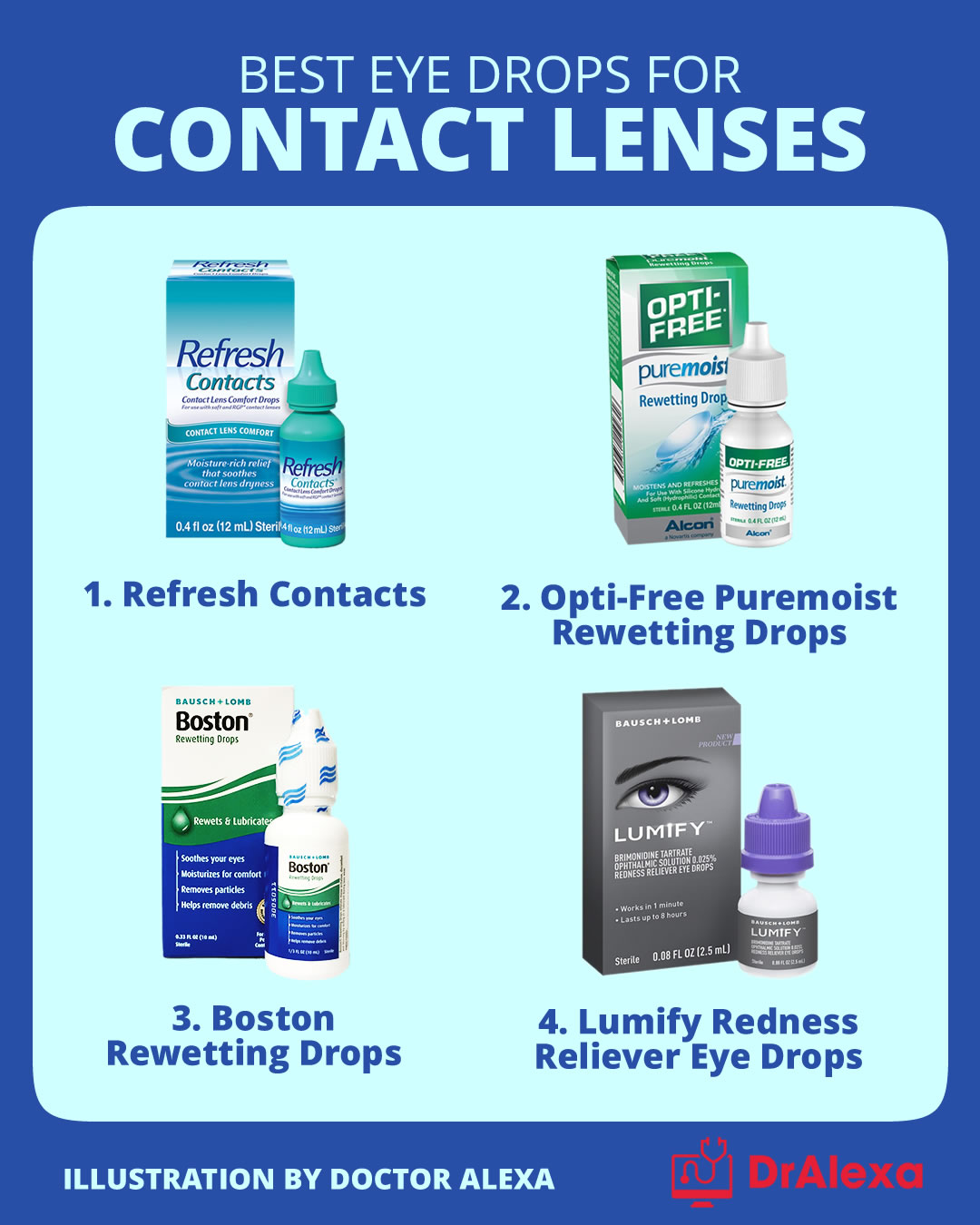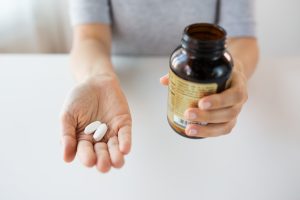If your eye is infected, your healthcare provider will most likely prescribe antibiotic eye drops for treatment. Antibiotic eye drops are ideal for killing the microscopic organisms that enter one’s eye and cause bacterial infections. Eye infections are common, but many people are unaware of what causes them. Bacterial conjunctivitis is one of the causes of these infections. This type of infection is common in children. If you have a school-going child, the level of vulnerability is high. Another reason people catch infections affecting their eyes is by wearing dirty contacts or sleeping in them.
Therefore, contact care is vital to avoid problems. Symptoms of an infection on your eye include the following: pain, redness, swollen eyes, drainage, and light sensitivity. If you notice the symptoms above, taking immediate action is essential to avoid further complications. In addition, there are important things about eye drops to keep in mind, including never using another person’s prescription and never saving an unused medication for later use.
Types of Antibiotic Eye Drops
People with infections can use various types of antibiotic eye drops. Each class has its action mechanisms and reactions once introduced into infected areas of the eye. Like any other drug, some are stronger than others, and others are made for treating particular infections.
Some of the drops can’t cure all the infections a patient may have. For this reason, combining 2 or 3 types into one formulation may be necessary to treat a disease comprehensively. For example, if you have an infection in your eye, your doctor should examine you thoroughly to ensure you use the right eye drop. This is why it is prudent to avoid applying antibiotic eye drops without the recommendation of a doctor or an eye specialist.
Here is a list of the most common prescription antibacterial eye drops: Gentamicin, Bacitracin, Neomycin, Tobramycin, Erythromycin, Neomycin, Ciprofloxacin, and Polymyxin B.
Which Antibiotic Eye Drops is Best for You?
Eye health is essential; therefore, you should take good care of your eyes like any other body. Part of being severe with eye health is ensuring you use the proper medication whenever you develop infections. Any wrong decision may end up costing your dearly. You may have to spend more money to treat a condition you should have easily prevented.
Never ignore an infection in your eye. If it happens to last for more than 48 hours, you should talk to a specialist to have a checkup. The good thing about seeing a professional is getting the proper intervention at the right time. The mistake that most people make is taking matters into their own hands and buying products without the prescription of a qualified professional.
So, booking an appointment with a doctor is the first step in knowing the best antibiotic eye drop for you. A physician will examine you and tell you which drops are best for you. Fundamentally, the best eye drops are the ones with the ability to treat your condition in the most comprehensive way possible. As you’ve already learned, some infections may require a particular eye drop. In contrast, others may deem it necessary for a doctor to mix several alternatives to produce a single formula for effective treatment.
A critical look at this issue shows that the best treatment option depends on the type of infection and the extent of the disease. For example, you may use an eye drop that isn’t effective for the style and size of the infection on your eye. This is because you won’t treat your eyes well, and the consequences may be severe. So, the best antibiotic eye drops for you are the ones with the capacity to handle the infection in your eyes in the most effective way possible.
Best Antibiotic Eye Drops for Contact Lenses
Here are the best eye drops for contact lenses
Refresh Contacts: For people who wear contacts, these drops are known to take care of the irritation and constant dryness resulting from wearing disposable lenses. The drops act as a cushion between the contact and the cornea, thus helping reduce high dryness and irritation levels.
Opti-Free Puremoist Rewetting Drops: They are suitable for providing eyes with much-needed moisture for a long time. They also help to address cases of eye discomfort. Contacts can cause eye pain; thus, you need the right eye drops to relieve the discomfort. This is a product with a proven ability to produce quality outcomes.
Boston Rewetting Drops: These drops work by moisturizing both the eyes and contacts. In addition, they relieve irritability, dryness, and discomfort.
Lumify Redness Reliever Eye Drops: This is an eye drop you can opt for to get rid of redness quickly and effectively.

Best Antibiotic Eye Drops for Dry Eyes
If you have dry eyes, here is a list of the best eye drops to address the problem in quality and healthily.
Blink Tears Lubricating Eye Drops: This product relieves itching, dry, and constantly irritated eyes. If you experience mild to moderate dry eyes, this is an option you can choose. The drops can remain in the eye for a more extended period. There is also less blurring upon using this product.
Systane Ultra Eye Drops: This product has proven to be a viable solution for burning, dry, and infected eyes. In addition, this product helps alleviate the problem in the shortest time possible for cases of blurry vision.
Similasan Complete Eye Relief Drops: One of the benefits of using this product is that it has natural ingredients. As a result, it helps to relieve itching and dry and red eyes and prevents further complications. In addition, it is non-irritating and doesn’t have harmful chemicals.
Systane Ultra Lubricant Eye Drops: This product provides extended relief for scratchy, irritated, burning, and dry eyes. It is also known to have the capacity to reduce symptoms of blurry vision.
Side Effects of Antibiotic Eye Drops
Just like any other medications, antibiotic eye drops have side effects that may begin to manifest if you fail to use them as prescribed by the doctor. It’s true that as long as you have an infection, you should use these medicated drops to provide the relief you need. However, using them according to the doctor’s prescriptions would be best to avoid unnecessary complications. So, if you use it differently from the prescriptions of a professional, you may encounter problems. For example, you should not use drops prescribed for another person as this may not address your particular infection effectively. It may also lead to complications by not using the proper treatment.
Prolonged use of medicated drops includes irritation, redness, and hiding of a severe problem. If you’ve used a product for a long time, there’s a possibility that you may hide a serious problem affecting your eyes. So, if symptoms such as redness, dryness, and irritation persist for a long time, it’s advisable to discontinue eye drops and consult a doctor for further checkups. The longer you continue taking medicated drops without experiencing significant improvement, the higher the likelihood that something serious is happening. So, it’s better to go and see a doctor for further checkups.
The bottom line is that if you have to avoid side effects from using these drops, you must follow the prescriptions and recommendations of your doctor or pharmacist. These professionals will advise you on how to use eye drops, how long, and when to stop taking them.
Steps of Applying Eye Drops
If your doctor recommends drops to treat pink eye or other complications, you should use them correctly. It would help if you used recommended and prescribed drops according to the directions for quality outcomes.
You should position your body well to apply the drops correctly. The first thing is to push your head back and then look up.
The second step is to use your hand to pull down your lower eyelid. Make sure you pull the lower eyelid enough to create adequate room for the drops.
Using your other hand, hold the bottle of your drop upside down and ensure that the tip is above the space you’ve created for the medication.
Squeeze the recommended number of drops into the space you’ve created
After squeezing the drops into your eye, close it for about a minute to avoid the liquid from draining. If using different eye drops to treat your infection, wait about 5 minutes before using another.
Of great importance still, it’s crucial to prevent infections when applying eye drops. One of the tips you should use to avoid infections is to ensure that you wash your hands thoroughly before applying. Hands can be dirty because of the activities you’re engaged in. So, please don’t assume that you’re clean, and go ahead to apply the drops without washing them. Instead, use soap and water to kill germs that may cause infections.
Also, avoid touching the tip of the bottle with your hands or placing it against any surface. It can infect the tip and risk transferring the infections to your eye, complicating your condition. Lastly, avoid touching your eye with the tip of the bottle containing the prescribed drop. Again, this will help eliminate any risk of infecting your eyes. Remember, eyes are compassionate; thus, infecting them is very easy. If you’re having any challenges with the application, you can consult any specialized tools to help with the process.
Frequently Asked Questions
The answer to this question is that these drops cannot be a reason for you to develop stomach upsets. Unfortunately, this is a common mistaken belief about these products. Fortunately, your stomach will remain okay if you’re taking these medications.
The quick answer to this question is that they don’t have any relationship with diarrhea. This is another misconception about medicated eye drops. You don’t have to worry about digestive problems using these products to treat infections in your eye. You can talk to your doctor about the same and extract the necessary information on the issue.
Though this side effect is rare, it is possible. It’s essential to note that there are different types of drops, each with its side effects. First, awareness of the products’ familiar and rare side effects is valuable.
If you take the example of ofloxacin, which treats conditions like pink eye and corneal ulcers, there’s a rare possibility of users developing blurred vision. Other effects of the product include dryness, tearing, and irritation. Based on this information, you must consult your doctor to know more about the standard and uncommon effects of using drops to treat infections. With this information, you’ll know the signs to look out for to discontinue the use of particular drops.
Indeed, antibiotic eye drops and eye ointment are significant when treating a case of bacterial eye infections. Suppose you notice that your eyes are not functioning optimally or have problems like pink eye. In that case, it’s prudent to seek advice from a professional to deal with the issue professionally. Please note that there are different infections, and each condition has appropriately medicated drops to treat it. Avoid applying products without the prescriptions of a doctor or not knowing how to use them correctly. This may end up magnifying your current problem. So, for quality outcomes, make sure you have the proper knowledge.





